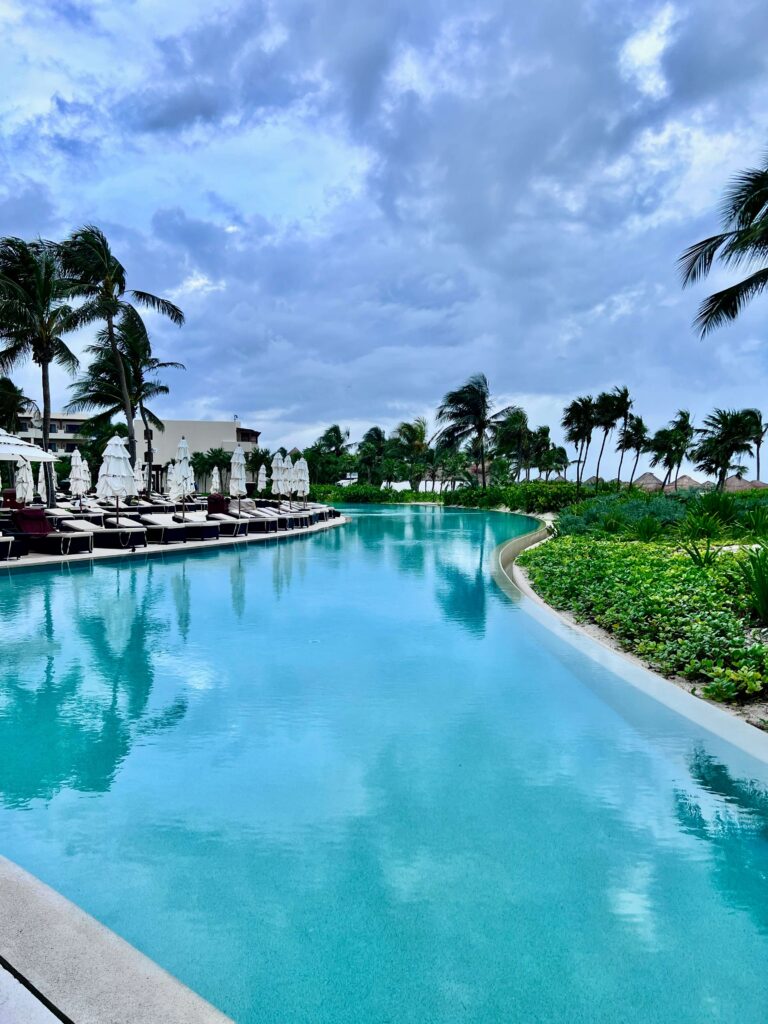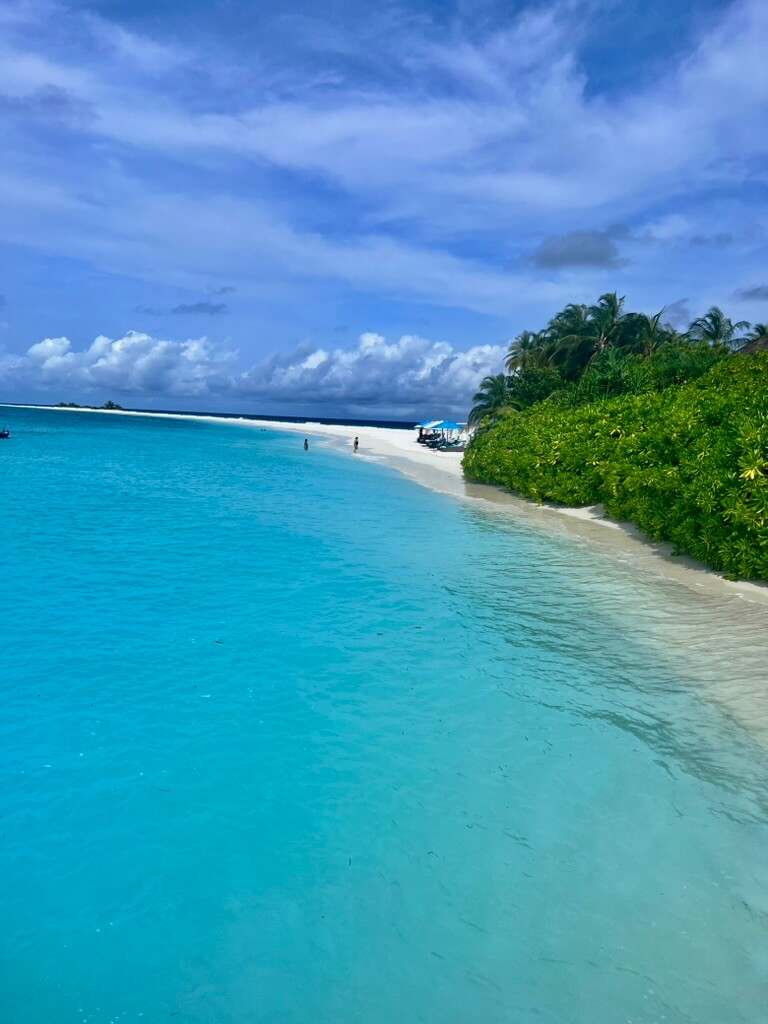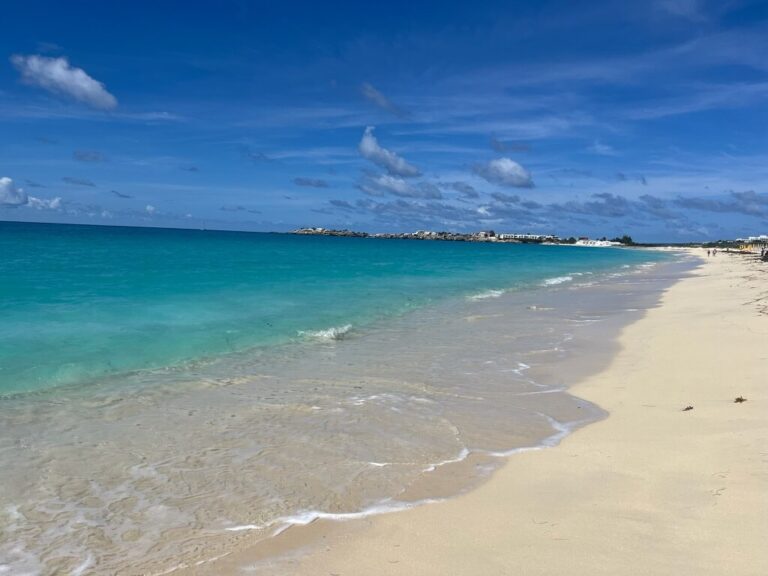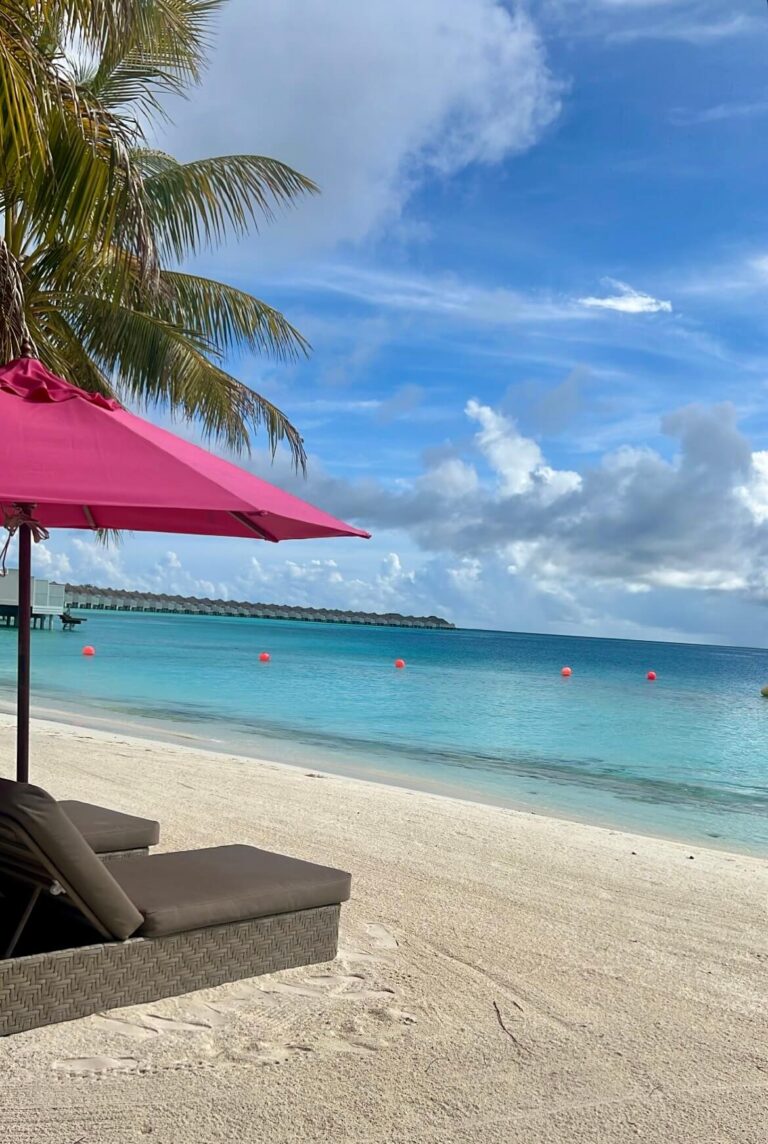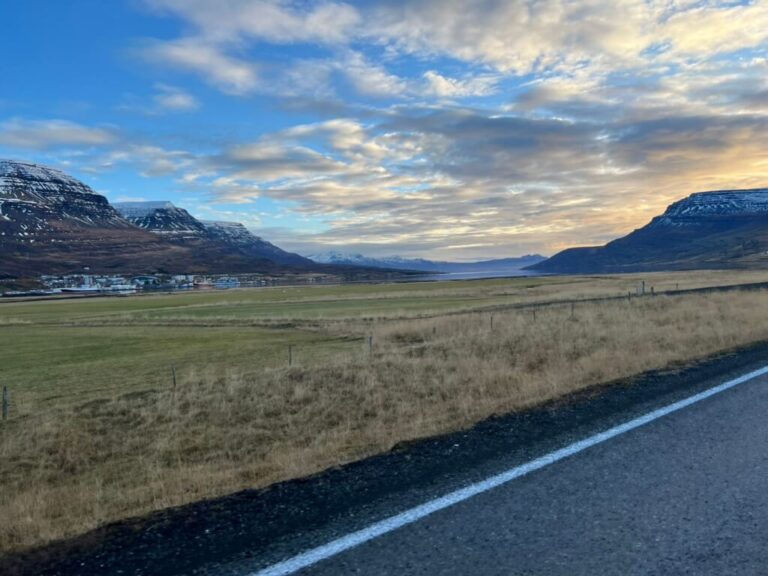Things To Know Before Traveling to Japan
Japan is one of the most fascinating countries I’ve ever visited. From the hustle and bustle of Tokyo to the serene temples in Kyoto, it’s a destination packed with contrast and culture.
Japan is known for its social customs and unspoken rules that can catch first-time visitors off guard. If you want to get the most out of your trip, a little preparation goes a long way.
Here are the key things to know before traveling to Japan. These tips will help you navigate like a local, avoid common hiccups, and make the most of your experience!
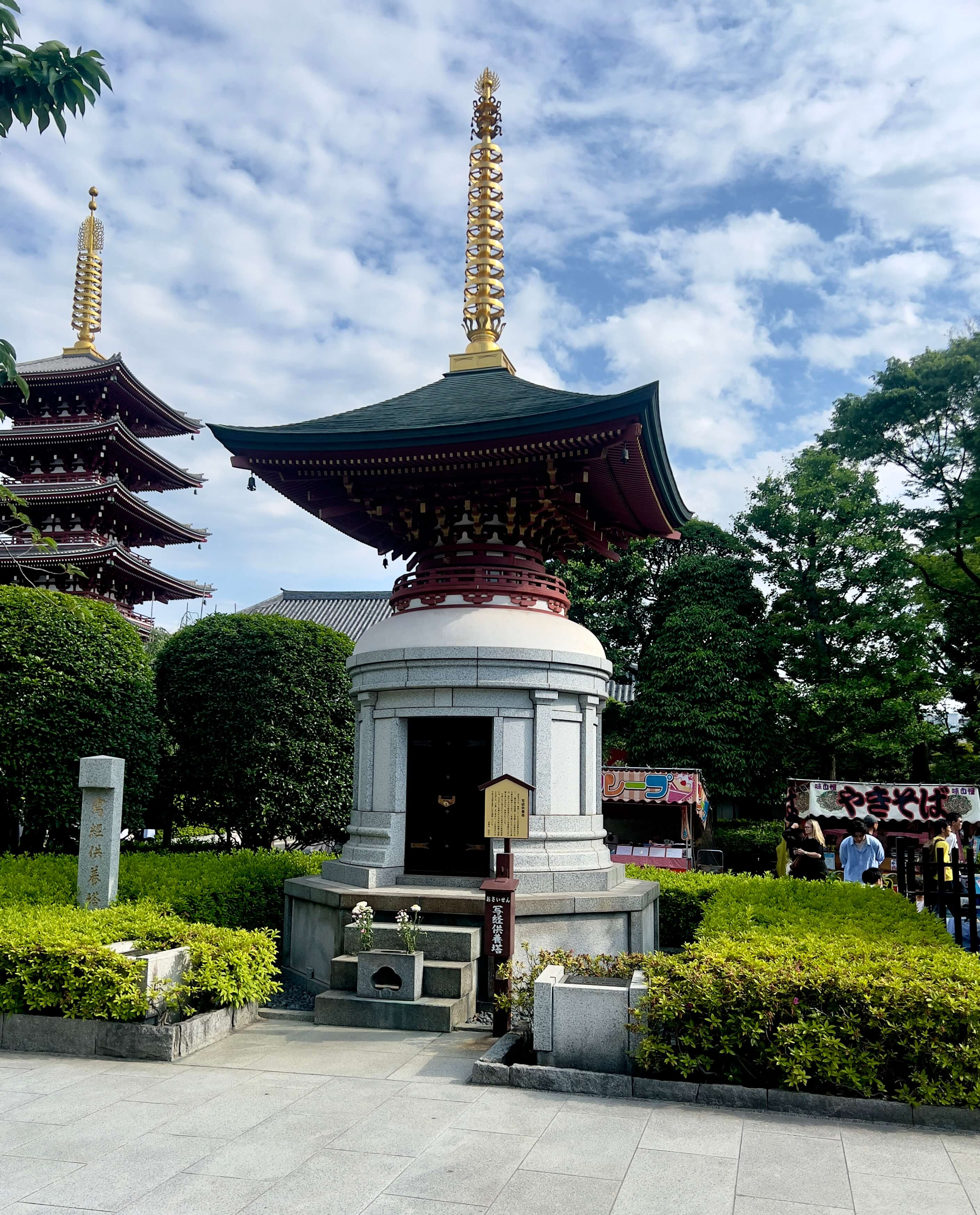
Table of Contents
Google Maps/Translate
Google Maps works really well in Japan, especially in big cities. You can use it to plan subway routes, find walking directions, and even get train platform information. I heavily relied on Google Maps every day to get us to our next destination! You can download the whole city map to your phone in advance so you use less mobile data when browsing. I suggest doing this for every city you’re planning to visit.
Google Translate is essential. While many signs in Japan include English, most restaurant menus and smaller businesses only have Japanese. We even saw a sign that said “If you don’t know Japanese, don’t come here”, so just pay attention to signage every where you go. I used the camera feature on Google Translate constantly to read menus and product labels. It’s also useful for translating written signs, packaging, and even for basic conversations with locals.
Data eSim
You definitely want to make sure you are connected in Japan! You’ll want fast, reliable data from the moment you land. I recommend using a data eSIM instead of picking up a pocket Wi-Fi. It’s easier, cheaper, and you don’t have to worry about charging another device.
I used Airalo, which let me buy and install the eSIM before leaving home. It connected automatically once I landed in Tokyo. I bought 1 GB at a time, and added to it when I needed more.
Airalo offers flexible data packages, and you can top up anytime through the app. Coverage was strong everywhere I went, including subways and rural areas. For me, it was the most convenient and cost-effective option.
Luggage Handling
Japan makes it incredibly easy to travel light! You can send your suitcase from city to city using luggage forwarding services. You can arrange this in advance on Klook, or hotels and 7-Eleven’s can help you arrange it when you get there. Delivery is usually overnight as long as you meet the cut-off time.
We sent a large and carry-on suitcase from Tokyo to Kyoto and only traveled with a backpack in between. Our hotel could send it for us, but they let us know it would get there faster if we used the service from 7-Eleven. We went over to 7-Eleven and grabbed the form, and our hotel helped us fill it out. Make sure you check with your hotel to see what your best option is!
This is especially useful if you plan to ride the Shinkansen(bullet train) with limited space. You can even send your luggage to the airport and have it there when you arrive! It’s affordable, reliable, and gives you more freedom to explore without hauling a big suitcase.
Pro Tip: Make sure you brings locks for your suitcases and backpacks so your belongings are secure. I also highly recommend purchasing Apple Airtags so you can track your luggage when it’s en route!
Reserve Tickets in Advance
Some of Japan’s most popular experiences book out well in advance. If you want to visit TeamLab Planets, Shibuya Sky, or dine at a popular Omakase restaurant, make reservations as early as possible!
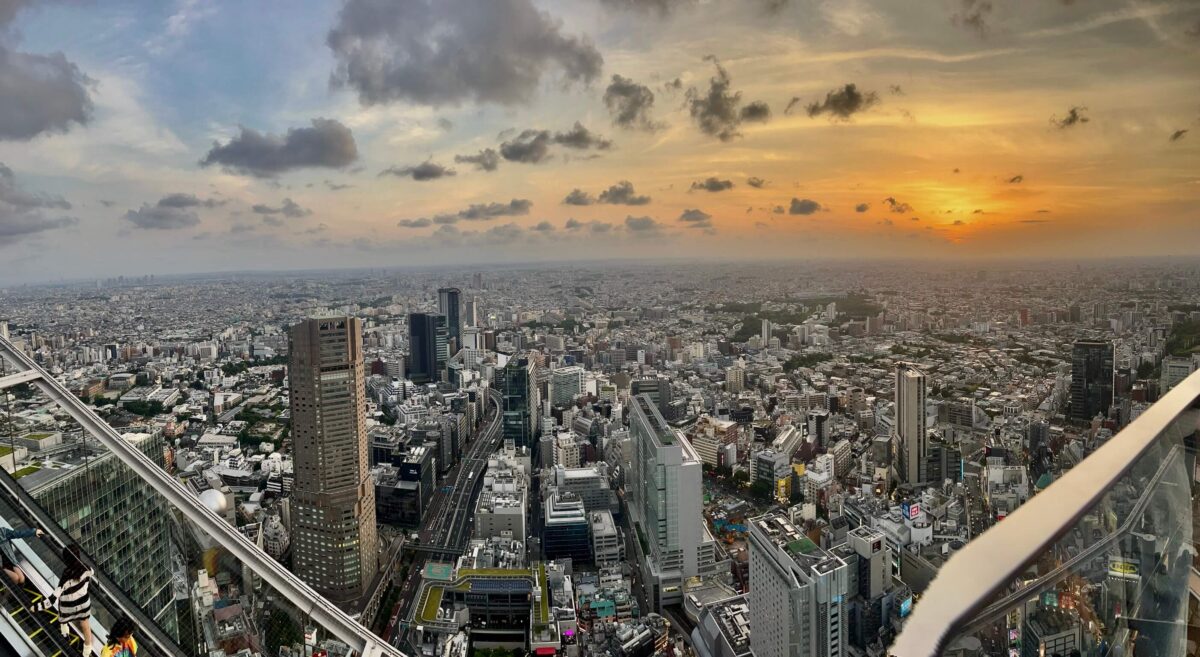
Train tickets might also need to be purchased in advance, especially during cherry blossom season or holidays. See the Rail Pass section for more information on this!
For high-end restaurants and experiences, it’s not unusual to need reservations a month or more in advance. Sites like TableAll or Pocket Concierge can help you with these reservations. You’ll also need advance tickets for attractions like the Go Kart Experience or Ghibli Museum.
Klook is what I used to book a lot of our experiences! They have a convenient app to use, and you can access the most popular attractions, metro cards, hotels, and hidden gems! They are also a certified 3rd party seller for Universal Studios! This is where we purchased our tickets to the park.
Open-Jaw Flights
If you plan on following Japan’s golden route, it would be wise to open-jaw your flights. This means flying into one city and out of another. For example, you could fly into Tokyo and out of Osaka. This saves you time by not having to take the bullet train back to Tokyo or vice versa for your departure. Open-jaw flights can also make your trip feel smoother and save you money!
We flew into Tokyo and spent a few days, then took the bullet train to Kyoto to spend a few days, and then ended in Osaka and flew out from there. Osaka and Kyoto are very close together, so you could do these two cities in either order. The bullet train from Tokyo to Osaka was about $100USD for one-way, so you can see the savings by not having to go back to your origin.
There is also a better chance of finding award flights when searching one-way. I love to use PointsYeah.com to look for award flights. The free account will let you search multiple dates and airlines! You can also get up to 4 alerts with the free account to get notified when your flight drops or has availability.
Rail Pass
If you plan to travel between multiple cities, especially using the Shinkansen, look into the Japan Rail Pass. It can save you money if you’re covering long distances like Tokyo to Hiroshima round-trip. The pass must be purchased before you arrive in Japan, and is available for 7, 14, or 21 consecutive days. Regional rail passes are also available and can be a better deal if you’re staying in one area. For example, this West Kansai Area Pass will cover Osaka, Kyoto, Nara, and Kobe!
It was not worth it for us to purchase the Japan Rail Pass. We only traveled from Tokyo-Kyoto-Nara-Osaka, and it was best for us to get regional passes and pay as we went with our Suica transit cards for other routes.
You can purchase a Tokyo Subway Pass that includes unlimited metro lines for 1/2/3 days for only $6 USD! We flew into Narita airport, and I found a combo ticket that included an airport express pass and a subway ticket for unlimited Tokyo metro lines for $20 USD! I highly recommend this if you’re flying into Narita airport.
Note that not all trains are covered, like the JR lines, and you’ll need to reserve seats on some routes. Be sure to calculate your itinerary before buying to see if the savings justify the cost.
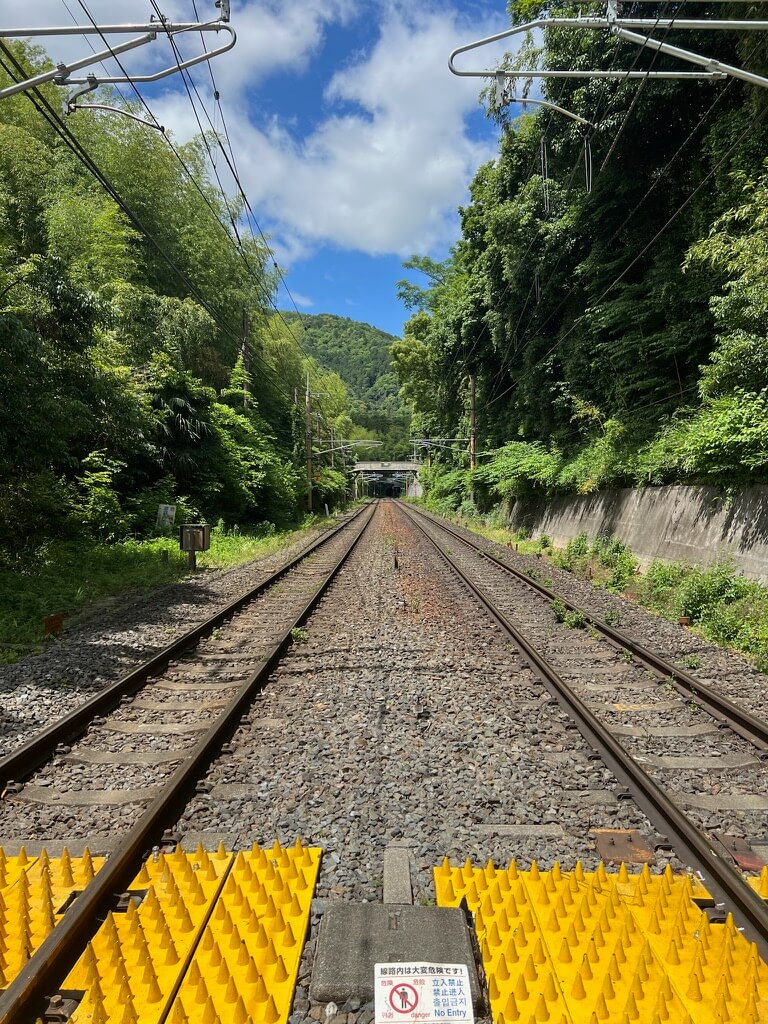
Currency/ATM’s
Japan is still a cash-heavy country, so don’t expect to use a credit card everywhere. Many small restaurants, local markets, and temples only take yen.
I recommend withdrawing cash at 7-Eleven ATMs, which accept most international debit cards and offer favorable exchange rates. There is a fee of 110 to 220 yen per transaction, depending on how much money you’re withdrawing.
Note: When withdrawing cash, you want to select YEN instead of your home currency. You will get the best conversion when you let your bank do it, rather than the ATM.
Sometimes banks will refund ATM fees up to a certain amount every month. I would check with your local bank to see if they will do this! If not, Charles Schwab Bank is a popular account that a lot of travelers use! They offer no foreign transaction fees and unlimited ATM fee rebates for cash withdrawals worldwide.
Rules/Etiquette
One of the qualities Japanese people are known for is their social customs. Many of these are unique to Japan and deeply ingrained in the culture. Japan is polite, clean, and structured, but that also means there are unspoken rules to follow.
For example, you shouldn’t eat while walking, speak loudly and answer your phone on trains, or tip in restaurants. It’s also common to remove your shoes in homes, ryokans, and some restaurants.
Another thing you will notice is the lack of trash cans, but you will not see trash lining the streets either! If you have trash while out in public, it is expected to hold on to it until you reach your destination. I carried a sling bag with me every day to hold my belongings and souvenirs, but it was also good to carry my trash.
The only trash cans I found in public were in drink vending machines like the one below. Some were for recyclables only, so make sure you pay attention to the sign. This is where Google Translate comes in clutch!
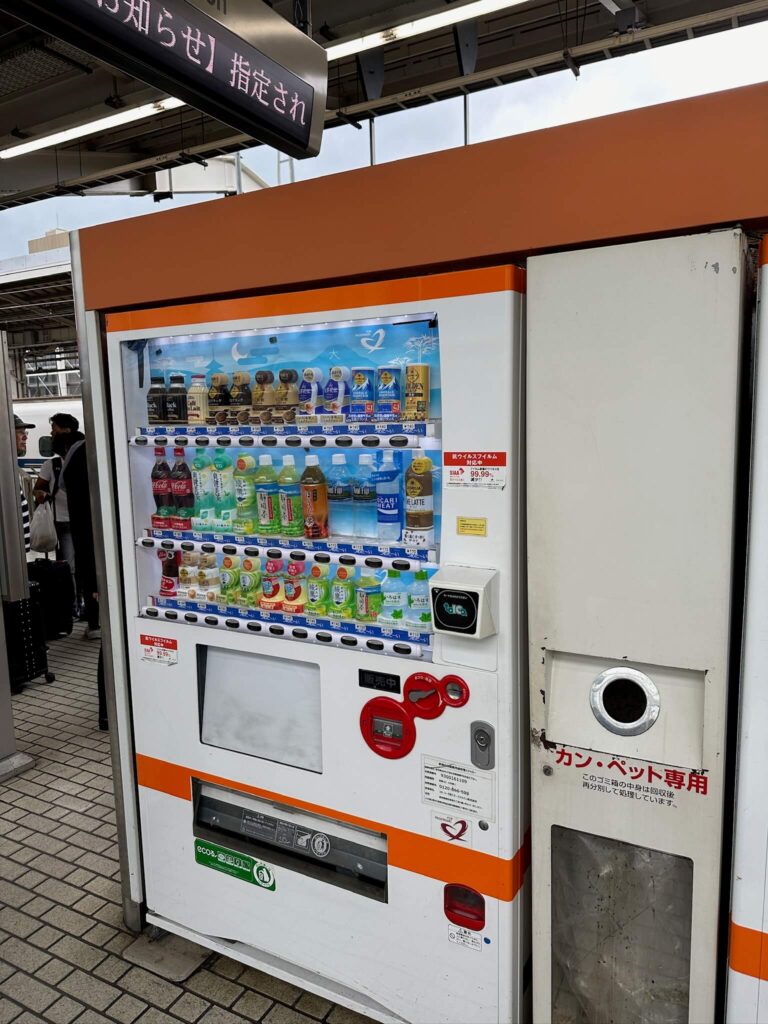
You also should be respectful in temples and shrines, follow posted signs, and always line up in an orderly way (especially for trains). You will notice this on escalators and stairs as well. They all line up on the same side and form a single-file line. A little awareness goes a long way and shows locals you’re a considerate guest.
Common Phrases
You don’t need to be fluent in Japanese, but knowing a few basic phrases can go a long way. Locals appreciate when travelers make the effort. These are the phrases I used the most:
| English Phrase | Japanese (Romanized) | Pronunciation |
|---|---|---|
| Good morning | Ohayou gozaimasu | oh-high-yoh go-zai-mas |
| Hello / Good afternoon | Konnichiwa | kon-nee-chee-wah |
| Good evening | Konbanwa | kohn-bahn-wah |
| Thank you | Arigatou gozaimasu | ah-ree-gah-toh go-zai-mas |
| Excuse me / I’m sorry | Sumimasen | soo-mee-mah-sen |
| Do you speak English? | Eigo o hanasemasu ka? | ay-go oh hah-nah-seh-mas kah? |
| How much is it? | Ikura desu ka? | ee-koo-rah dess kah? |
| Delicious | Oishii | oy-sheee |
| Where is the bathroom? | Toire wa doko desu ka? | toy-ray wah doh-koh dess kah? |
| Water, please | Mizu o kudasai | mee-zoo oh koo-dah-sai |
| Can I take a photo? | Shashin o totte mo ii desu ka? | shah-sheen oh tote-teh moh ee dess kah? |
Practice a few of these before your trip or keep them handy on your phone. It makes everyday interactions smoother and more fun.
Final Thoughts
Japan is one of those places that rewards travelers who do a little homework. It can feel stressful at first when traveling to a new country, but preparing and researching how to navigate transportation, technology, and etiquette will help you avoid stress and experience the best of what the country has to offer.
Whether you’re planning a first trip or heading back for another visit, these tips can help you travel smarter and more confidently. No matter how much you plan, Japan will surprise you in the best way. It’s a country where small details matter and every corner holds something new!

